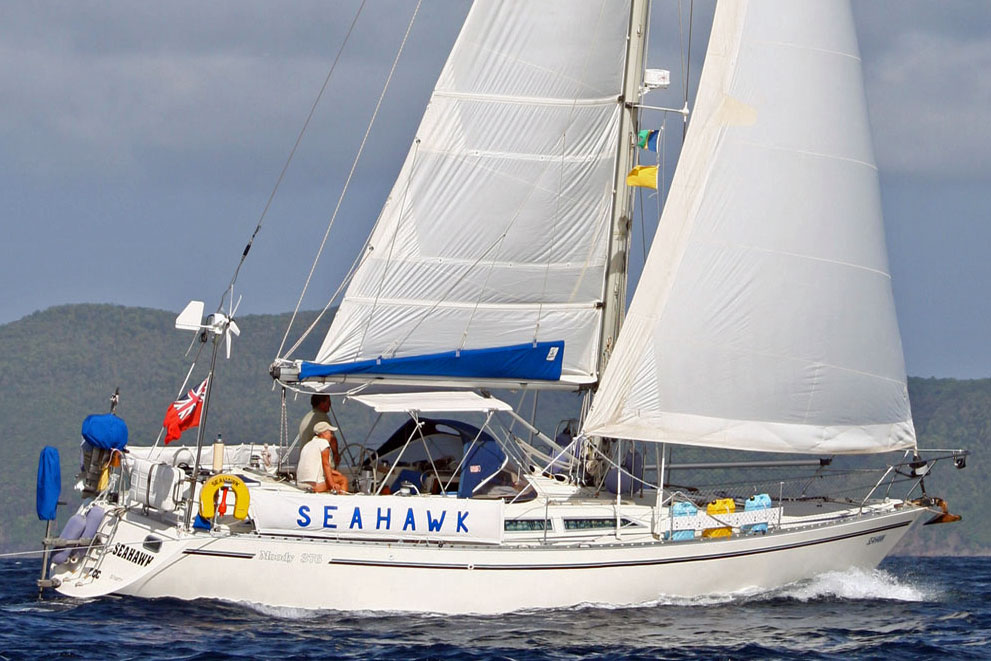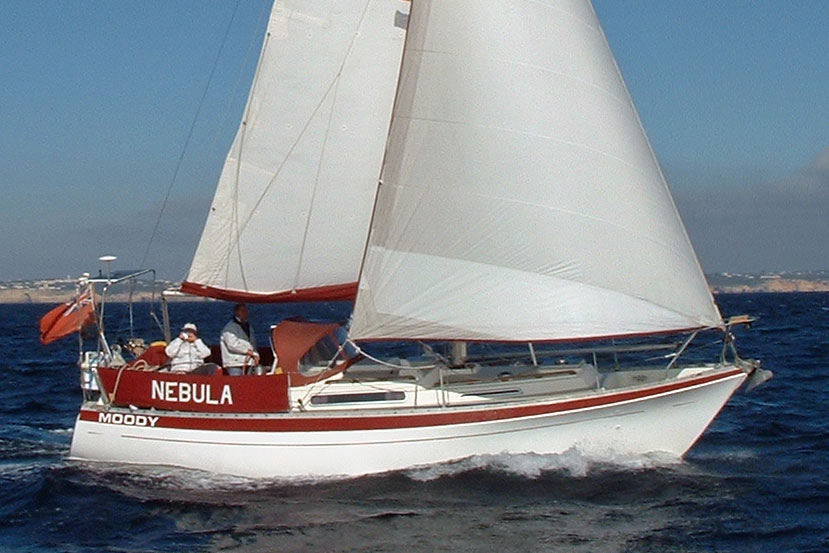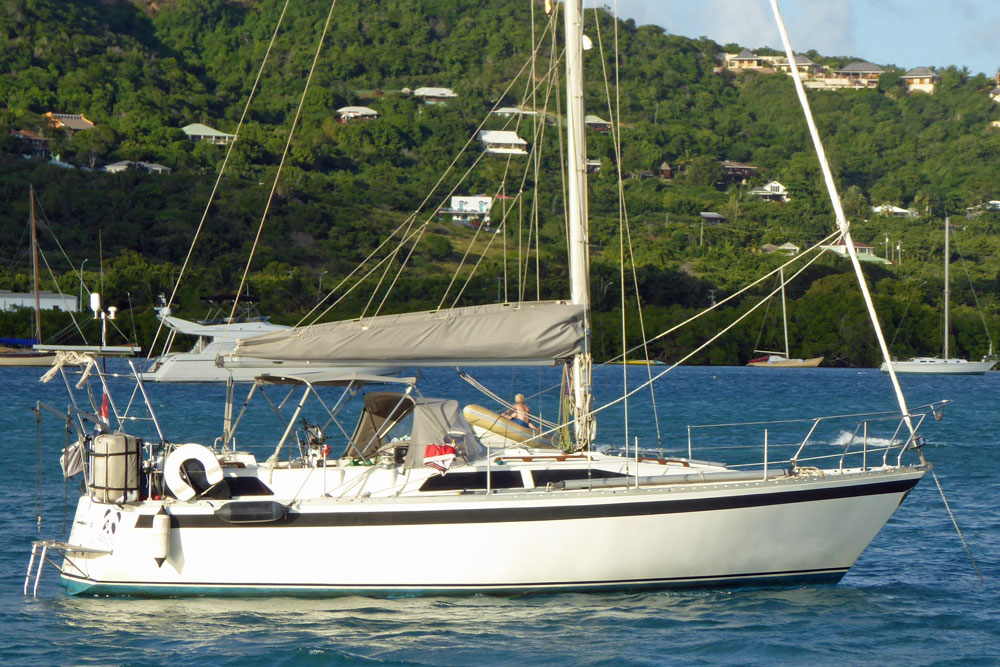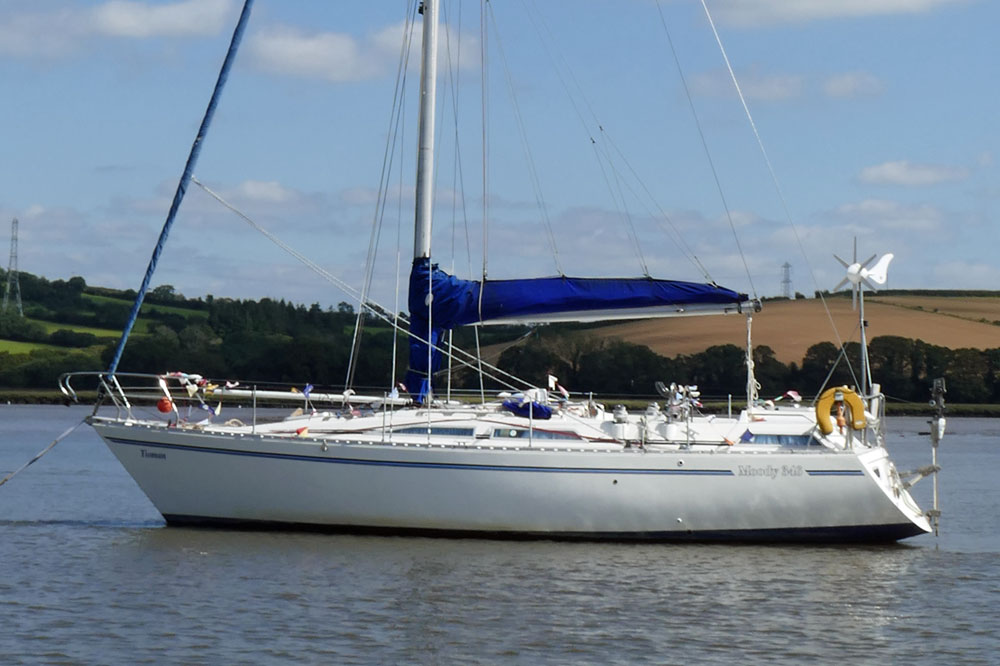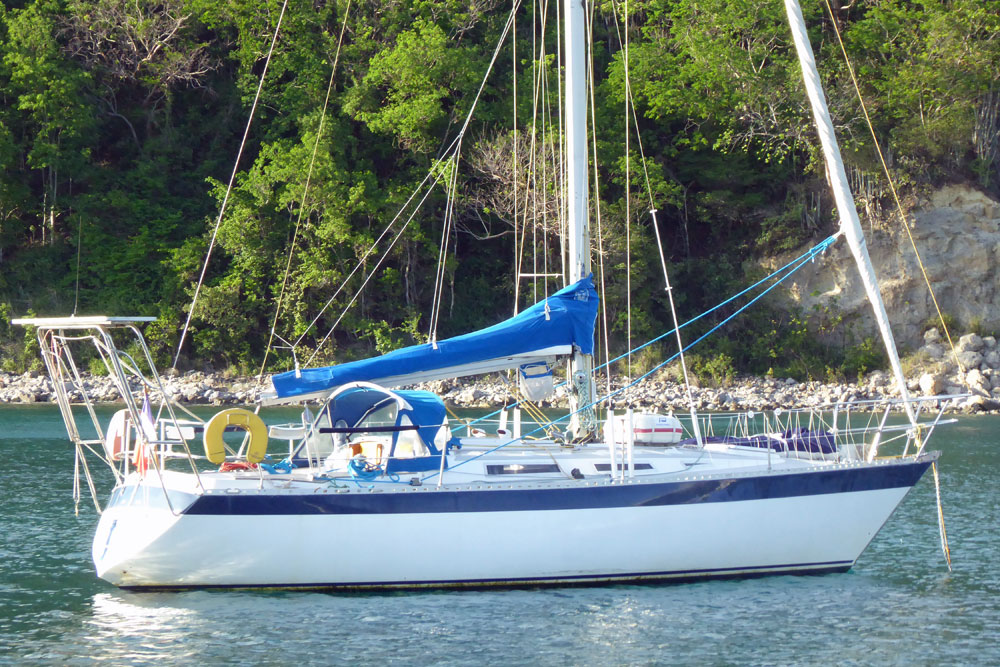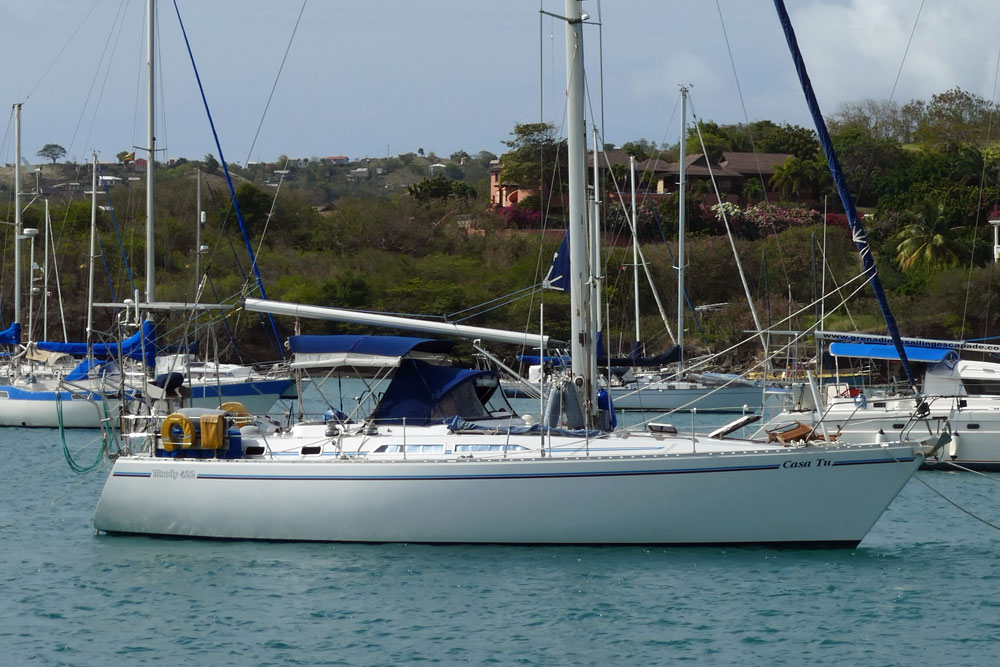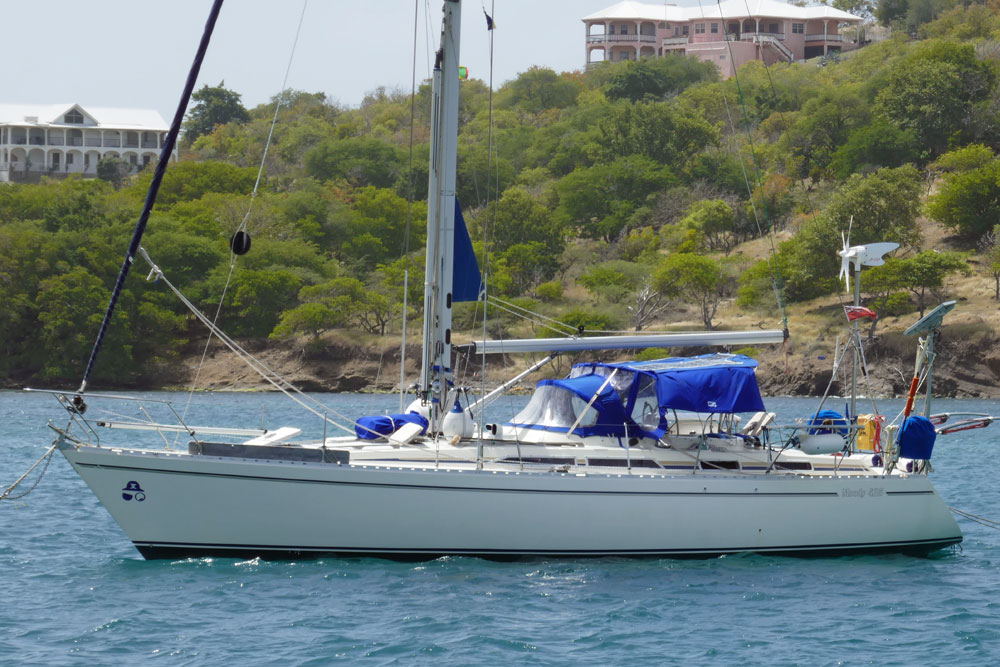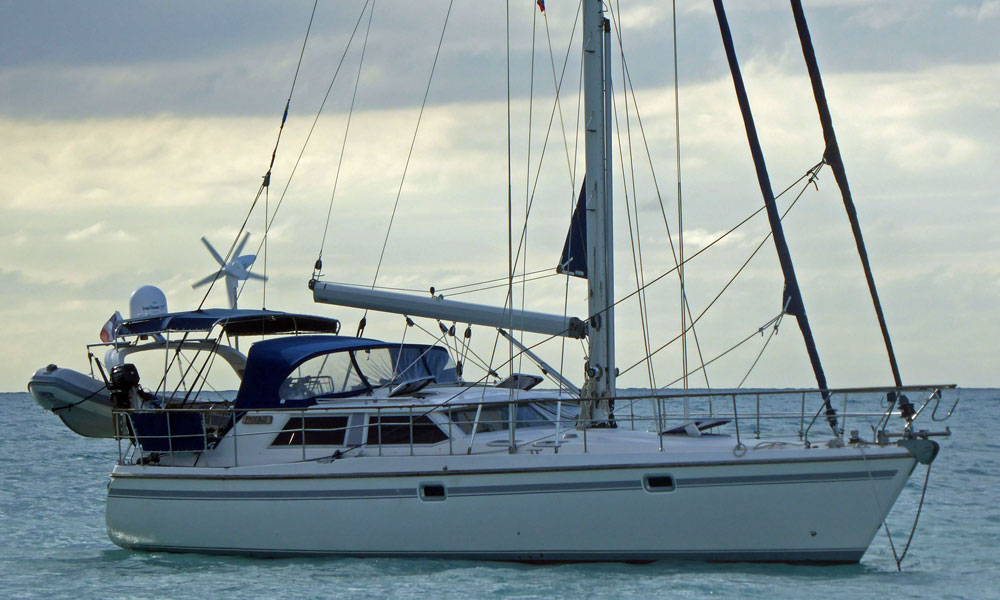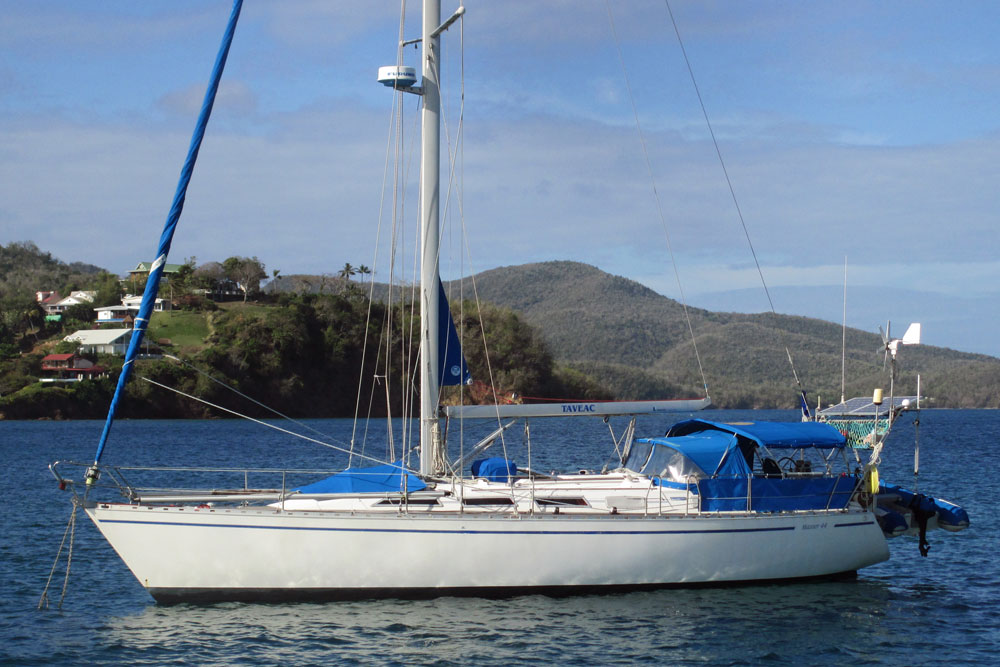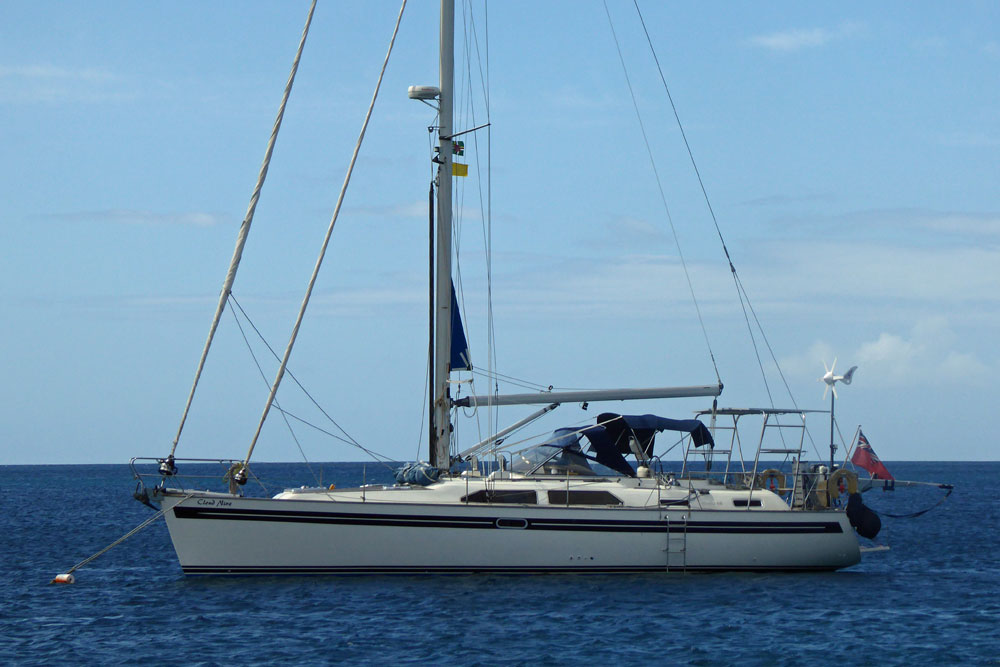- Home
- Cruising Yachts 35' to 40'
- Moody 376
The Moody 376 Sailboat
Specs & Key Performance Indicators
The Moody 376, a well-regarded cruising sailboat, was designed by the renowned British yacht designer Bill Dixon. This vessel was manufactured by Moody Yachts, a company known for its commitment to quality and innovation in yacht building.
The construction of the Moody 376 took place at Moody Yachts' facilities located in Swanwick, Hampshire, on the southern coast of England. Launched in the late 1980s, this model exemplifies the robust construction and thoughtful design indicative of Moody’s approach to yacht manufacturing during that period.
Published Specification for the Moody 376
- Underwater Profile: Fin keel, with skeg-hung rudder (balanced)
- Hull Material: GRP (fiberglass)
- Length Overall: 37'10" (11.5m)
- Waterline Length: 31'2" (9.5m)
- Beam: 12'5" (3.8m)
- Draft: 5'6" (1.7m)
- Rig Type: Masthead sloop
- Displacement: 16,250lb (7,571kg)
- Designer: Bill Dixon
- Builder: Marine Projects Ltd (UK)
- Year First Built: 1985
- Year Last Built: 1991
- Owners Association: Moody Owners Association
The Moody 376 was available in two versions: the standard fin keel version, with a draft of 5’6", and the optional shoal draft version, with a draft of 4’6".
The Moody 376 was an updated version of the earlier Moody 37, with the main difference being the addition of a sugar-scoop stern and a bathing platform.
Read more about the current range of Moody Yachts...
Published Design Ratios for the Moody 376
The Moody 376, with its published design ratios, provides a well-rounded profile that mixes performance with comfort, suitable primarily for coastal cruising and potentially capable in bluewater settings under the right conditions. Here's an analysis of its sailing characteristics based on the given ratios:
- Sail Area/Displacement Ratio: 16.2 - This ratio positions the Moody 376 within the range that indicates reasonably good performance (16 to 20). It suggests that the sailboat has adequate power for its displacement, giving it the ability to handle itself well under sail without being overpowered or sluggish. This level of performance makes it versatile across various wind conditions.
- Ballast/Displacement Ratio: 40.0 - A higher ballast/displacement ratio is indicative of a stiffer, more wind-resistant vessel. With a ratio of 40.0, the Moody 376 should theoretically be able to handle significant amounts of wind and maintain stability. However, it's important to remember that this ratio doesn't account for how the ballast is distributed within the keel. If the ballast is not deep or well-centered, the boat might not be as stiff as the ratio alone might suggest.
- Displacement/Length Ratio: 240 - Falling within the moderate displacement category (200-275), the Moody 376 is neither excessively heavy nor worryingly light. This balance suggests that the boat is sturdy enough to handle moderate seas comfortably but is not so heavy as to impair its sailing performance. It strikes a good balance between being agile and being secure.
- Comfort Ratio: 26.2 - With a comfort ratio in the range of 20 to 30, the Moody 376 is poised as a coastal cruiser with moderate stability. It implies a motion comfort level that is suitable for most family cruising scenarios, reducing the likelihood of discomfort in rough waters, albeit not as comfortable as heavier bluewater cruisers.
- Capsize Screening Formula: 2.0 - A value of 2.0 in this formula suggests that the boat has a good beam-to-displacement balance, enhancing its suitability for ocean passages. This indicates a lower risk of capsizing in extreme conditions, aligning the Moody 376 as a capable cruiser for more adventurous journeys, although it is always critical to consider all aspects of sea state and weather when venturing into open waters.
The theoretical nature of these ratios means they give a general guideline rather than a definitive prediction of performance and comfort. Specifically, the Ballast/Displacement Ratio might not fully define the seaworthiness if the ballast is poorly placed. Moreover, while Ted Brewer's Comfort Ratio provides a valuable insight into potential motion comfort, it may not capture the nuances of modern designs which can offer bluewater capability even if they don't score highly on this traditional scale. Modern light-displacement boats with wider beams and more contemporary designs, for instance, might offer good stability and comfort but might not fit neatly into these traditional metrics.
Using these ratios to assess the Moody 376 offers a helpful initial gauge of its capabilities, but sailing it in various conditions will provide the practical insights necessary to fully understand its performance and comfort levels.
This article was written with the assistance of Gemini, a large language model developed by Google. Gemini was used to gather information, summarize research findings, and provide suggestions for the content and structure of the article.
Other sailboats in the Moody range include:
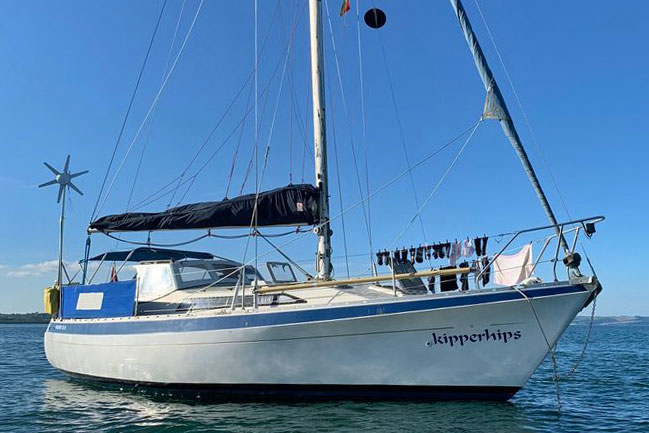 The Moody 33S
The Moody 33SRecent Articles
-
Ohlson 38 Guide: Specs, Performance Analysis & Cruising Review
Jan 07, 26 05:52 AM
Discover the Ohlson 38 sailboat. An in-depth look at its Einar Ohlson design, Tyler GRP construction, performance ratios, and why it remains a top choice for offshore sailors. -
Passoa 47 Sailboat Review: Comprehensive Specs & Performance Analysis
Jan 04, 26 04:57 AM
Discover the Passoa 47, a legendary aluminium blue water cruiser by Garcia. Explore technical specifications, design ratios, and why its lifting keel is a game-changer for offshore sailors. -
Sailboat Wheel Steering Maintenance & Inspection Checklist
Dec 30, 25 02:32 PM
Keep your vessel’s helm responsive and reliable with our expert maintenance checklist. Master cable tensioning and system inspections to avoid mid-passage failures.
